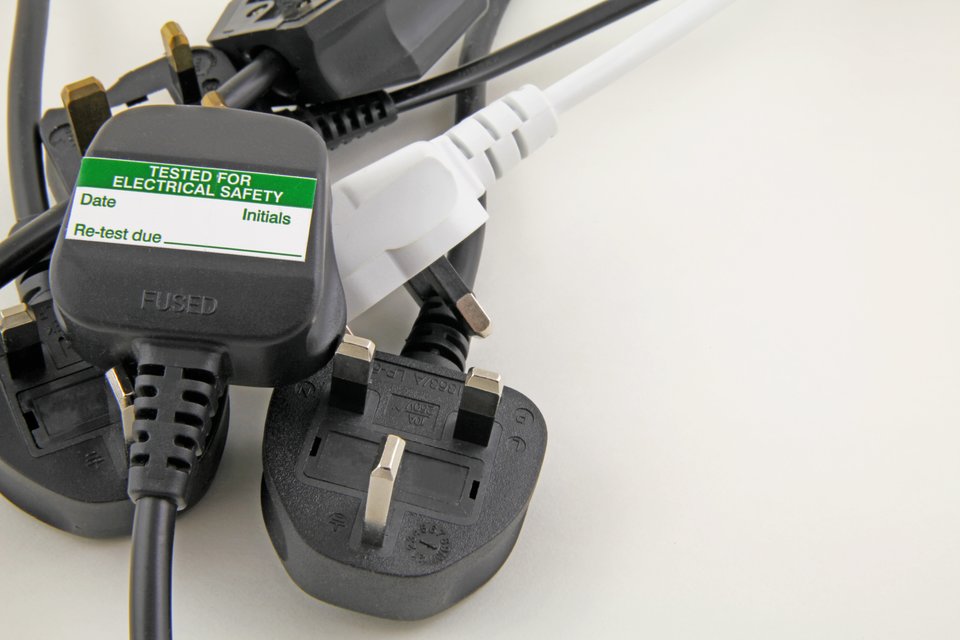
It’s fair to say that in every workplace – from schools to garages, restaurant kitchens to care homes – we rely heavily on our electrical gadgets to power our day. This is especially true of office buildings, where work typically involves an array of electrical equipment, such as desktop computers or laptops, monitors, printers and so on; and where frequently the demand for power outlets outweigh the supply.
Unsurprisingly, extension leads have become indispensable to ensuring a constant supply to the myriad of gadgets we rely on daily. But when overloaded or misused, extension leads can morph from handy tools to lurking hazards. Here we delve into the realm of extension lead safety and explore best practice tips to help you foster a safer, more productive workspace.
TALK TO US ABOUT OUR RANGE OF SAFETY SERVICES
Extension lead safety is not just a matter of good practice –it's a legal obligation. The In-Service Inspection and Testing of Electrical Equipment code of practice 5th edition includes specific technical requirements around the use of extension leads and multiway adaptors. The Health & Safety at Work Act and The Electricity at Work Regulations 1989 make it businesses’ responsibility to provide a safe working environment for employees and customers.
The improper use of extension leads can invite a host of unwanted scenarios such as tripping accidents, electrical shocks, fire incidents, or damage to valuable equipment. Therefore, being familiar with the health and safety regulations surrounding extension lead usage is crucial. Moreover, ensuring compliance with these regulations is not just about avoiding legal repercussions but about creating a culture of safety and responsibility within the workspace.
When venturing into the usage of extension leads, it’s important to consider the risks these pose:
The pathway to maintainingextension lead safety begins with a comprehensive understanding of your obligations to put in place and ensure company-wide health and safety policies and procedures. These should include:
Putting such measures in place can seem like a big commitment of company resources, but help is at hand. At phs Compliance we offer a wide range of services including electrical inspections in line with the latest legal requirements and regulations, ensuring that businesses remain compliant with the latest statutory safety regulations. Our comprehensive service offering encompasses not only routine inspections but also In service inspection and testing of electrical equipment, AKA Portable Appliance Testing (PAT), emergency lighting testing, and a host of other compliance services which are instrumental in ensuring a safe and compliant workspace.
Navigating beyond legal compliance, practical measures are the cornerstone of extension lead safety. Here are some useful Do’s and Don’ts to consider:
Extension lead safety is a collaborative effort demanding a proactive approach from both employers and employees. Adhering to health and safety regulations, educating the workforce, and embedding best practices within the organisational culture are essential strides towards fostering a safe and conducive work environment.
Whilst it may be challenging for businesses to maintain compliance across the sheer volume of electrical equipment used by most offices today, phs Compliance’s UK-wide inspection and testing services offer the perfect solution.By engaging the help of our fully licensed professional technicians, we can significantly reduce the strain on your resources and ensure a safe office environment for your workforce.
Contact phs Complianceto discuss our range of safety services today.
In 2015 phs Compliance began supporting our customers' critical infrastructure by carrying out all electrical safety inspection, testing, remedial work and compliance reporting for four large managed
Our Project Services division won a significant M&E project following a successful tender submission to a large NHS Foundation Trust in the Midlands, the main provider of acute hospital and
phs Compliance began working with our client in 2015, delivering electrical fixed wire inspection and testing services across one hundred per cent of the hospital estate. Completed in 2010 at a cost
phs Compliance were commissioned to replace 135 existing multi-storey car park overhead lights and emergency exit signs with new energy-saving LED lights combined with motion sensors. The car park
This site uses cookies that enable us to make improvements, provide relevant content, and for analytics purposes. For more details, see our Cookie Policy. By clicking Accept, you consent to our use of cookies.